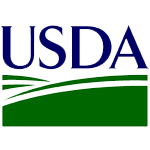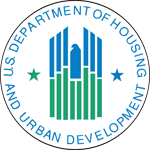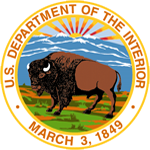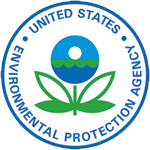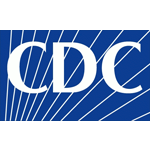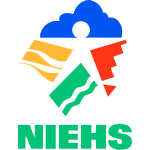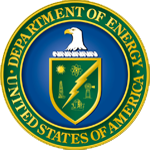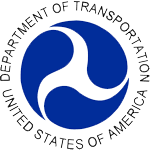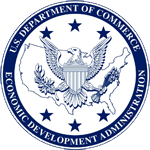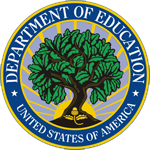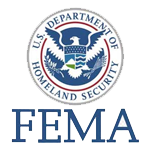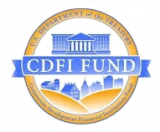Mission Alignments of Urban Waters Agency Partners
Many of the following links are to non-EPA sitesExit
The missions of USDA Forest Service and the Partnership are strategically aligned based on the following goals:
- Promote all-lands conservation
- Connect the US along the rural-urban gradient
- Conduct ecological and social science research on urban ecosystems
- Engage the public in urban natural resources stewardship – public education, job training, volunteer action
- Support green jobs
- Create public-private partnerships
- Implement watershed forestry projects
- Reconnect people to their waterways through science, management and technology transfer
- Work to revitalize and stabilize communities in economically distressed areas
The missions of HUD and the Partnership are strategically aligned based on the following goals:
- Leverage $14M in sustainability grants via HUD’s Sustainable Communities Planning and Challenge grant programs
- Integrate housing, land use, economic development, transportation, and infrastructure investments in ways that foster healthy communities and residents
- Partner to revitalize distressed lands along urban waterways
- Improve access and education for communities along waterways
- Connect low to moderate- income community stakeholders to projects that affect them
The goals of the America’s Great Outdoors initiative align with those of the Urban Waters Partnership in the following ways:
- Reconnect Americans, especially children, to US rivers and waterways, landscapes of national significance, ranches, farms and forests, great parks and coasts and beaches by:
- promoting community-based recreation and conservation, including local parks, greenways, beaches and waterways
- advancing job and volunteer opportunities related to conservation and outdoor recreation
- supporting existing programs and projects that educate and engage Americans in our history, culture, and natural bounty
- Build upon State, local, private and tribal priorities for the conservation of land, water, wildlife, historic and cultural resources, creating corridors and connectivity across these outdoor spaces and determine how the Federal Government can best advance those priorities with public-private partnerships and locally supported strategies.
- Use science-based management practices to restore and protect our lands and waters for future generations.
The missions of EPA and the Partnership are strategically aligned based on the following goals:
- Use all tools at our disposal to protect US waters
- Work at community level to provide safe, healthy and accessible outdoor spaces
- Focus on economically distressed communities, and work to create jobs
- Create new and innovative partnerships
- Recognize and build on local efforts and leadership, by engaging and serving community partners
- Engage communities in activities that increase their stewardship of local urban waterways
The missions of CDC and the Partnership are strategically aligned based on the following goals:
- Healthy and accessible urban waters
- Protecting public and environmental health
- Reconnecting people in underserved communities with their waterways
- Engaging and serving community partners
The missions of CNCS and the Partnership are strategically aligned based on the following goals:
- Engaging and serving economically distressed communities
- Strengthening communities and developing leaders
- Recognizing and building on local efforts and leadership by engaging and serving community partners
In August 2012, NIEHS released its Strategic Plan for 2012-2017 after over a year of input from the Environmental Health Sciences community and other stakeholders. The NIEHS Strategic Plan reflects identified themes and goals from the Strategic Planning process to help NIEHS with efforts to support and move forward our mission and vision. Current goals from the NIEHS 2012-2017 Strategic Plan that align with the mission and strategies of the Urban Waters Federal Partnership include:
- Evaluating the economic impact of policies, practices, and behaviors that reduce exposure to environmental toxicants, through prevention of disease and disabilities, and invest in research programs to test how prevention improves public health and minimizes economic burden.
- Promoting bidirectional communication and collaboration between researchers and stakeholders, e.g., policy-makers, clinicians, intervention and prevention practitioners, and the public, in order to advance research translation in the environmental health sciences.
- Enhancing the teaching of Environmental Health Sciences at all levels of education and training — kindergarten through professional — to increase scientific literacy and generate awareness of the health consequences of environmental exposures.
The missions of NOAA and the Partnership are strategically aligned based on the following goals:
- Coastal management and restoration
- Improving and sustaining economic vitality by revitalizing urban waters
- Achieving healthy oceans and coasts by protecting the quality of rivers and watersheds
The missions of USACE and the Partnership are strategically aligned based on the following goals:
- Establishing strong partnerships with community-based organizations and local governments
- Leveraging existing community assets as well as federal resources to serve local needs
- Protecting urban water resources that are valuable to the health and safety of communities
The missions of EERE and the Partnership are strategically aligned based on the following goals:
- Develop approaches that can accelerate economic growth and job creation while improving the environment by both reducing greenhouse gas emissions and improving air and water quality.
- Ensure diversity and choice in the way energy services are produced
- Provide American businesses and households with low-cost energy services by creating low cost renewable supplies and energy efficient products and systems
- Insulate the U.S. economy from the price and supply uncertainties associated with petroleum
Shared priorities also include:
- Interagency coordination and issue resolution
The missions of DOT and the Partnership are strategically aligned based on the following goals:
- Integrate environmental sustainability into all work being done, including reducing water quality impacts of transportation infrastructure
Shared priorities also include:
- Interagency coordination and issue resolution
- Environmentally sensitive decision making Grant funding for safer, more sustainable infrastructure
The missions of EDA and the Partnership are strategically aligned based on the following goals:
- Foster healthy and accessible urban waterways to help catalyze local economic revitalization
- Collaborate regionally to leverage resources and work together to overcome economic challenges
- Support development of an urban waters-friendly national policy
- Make urban waters a funding priority
- Cultivate long-term jobs
The Department of Education has many initiatives that dovetail with the mission and principles of the Partnership to increase environmental protection, economic revitalization and connecting people to their urban waters. One initiative, U.S. Department of Education Green Ribbon Schools (ED-GRS), is an example of a perfect fit with the UWFP principals. Through this initiative, the Department of Education communicates best practices and resources in the areas of facilities, health and environment.
FEMA approves projects through its supplemental Public Assistance grant that align with the work of the Urban Waters Federal Partnership in several ways. Providing ways for people to access the water and enjoy recreational activities is an essential part of restoring urban waterways and revitalizing the surrounding communities. The Public Assistance program works with state and local officials to fund recovery measures and the rebuilding of government and certain private nonprofit organizations’ buildings, as well as roads, bridges and water and sewer plants.
Community Development Financial Institutions (CDFIs) are private financial institutions that are dedicated to delivering responsible, affordable lending to help low-income, low-wealth, and other disadvantaged people and communities. Since its inception in 1994, the CDFI Fund has built a nation-wide network of CDFIs committed to ensuring that underserved communities have access to quality, affordable, and credible financial services. The CDFI Fund supports the mission-driven financial institutions working on a local level that know their communities best. By financing community businesses—including small businesses, microenterprises, nonprofit organizations, commercial real estate, and affordable housing—CDFIs spark job growth and retention in hard-to serve markets across the nation.

